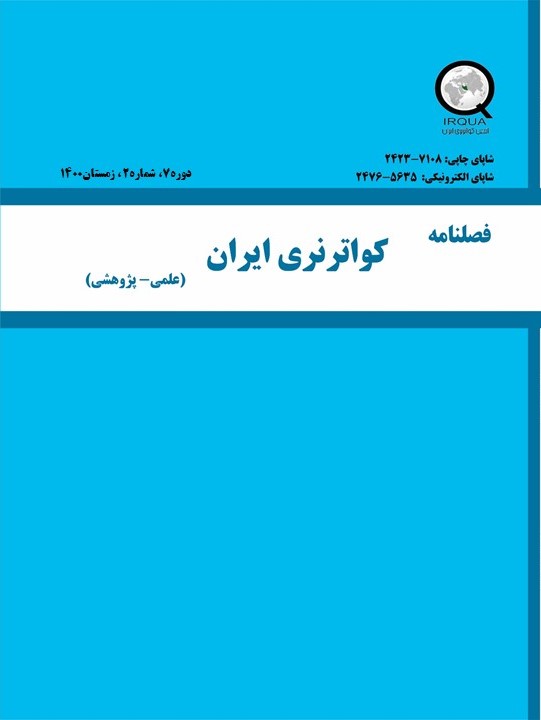نوع مقاله : مقاله پژوهشی
نویسندگان
1 مرمت اشیاء فرهنگی و تاریخی، دانشگاه هنر اسلامی تبریز
2 باستان سنجی آثار و مواد معدنی، دانشگاه هنر اسلامی تبریز
3 مرمت اشیاء فرهنگی و تاریخی، دانشگاه هنر اصفهان
چکیده
اسکلروکرونولوژی، مطالعۀ فیزیکی و شیمیایی بافت سخت موجودات زندهای است که معمولاً از طریق تجمع تدریجی لایهها، رشد میکنند. مطالعۀ میکروسکوپی برش ها، ریختشناسی و بررسی الگوهای رشد صدف بی مهرگان منجر به درک چگونگی از شرایط محیط رشد جاندار میشود. سنجش نسبت ایزوتوپهای پایدار در کنار مطالعۀ مقاطع نازک میکروسکوپی نیز امکان بازسازی شرایط محیطی زمان رشد جانور را فراهم میکند. روشهای اسکلروکرونولوژی در چند دهۀ گذشته علاوه بر زیستشناسان به دلیل دقت بررسی سالانه، ماهانه، هفتگی و حتی روزانه، مورد توجه دیرینهشناسان و باستانشناسان برای پاسخ به پرسشهای دیرین اقلیم بوده است. علی رغم دقت و اهمیت کاربردی آن در زمینه بازسازی شرایط محیطی، به نظر میرسد همچنان برای بسیاری از پژوهشگران ناشناخته است. علاوه بر این در اسکلروکرونولوژی با گونههایی از جانداران روبرو هستیم که تفاوتهایی را در بخشهایی از روند بررسی الگوی رشد یا چگونگی نمونهبرداری جهت آنالیز ایزوتوپی ایجاد میکند. این در حالی است که گاهی گونههای تایید شده برای آنالیز با گذشت زمان این قابلیت را از دست میدهند یا حتی گونههایی هستند که تنها قسمتهای مشخصی از آنها میتواند مورد بررسی قرار گیرد. چنین مواردی برای پژوهشگرانی که به تازگی به این رشته علاقمند شدهاند، مطالعۀ روشهای مربوط را دشوار کرده است. این مقاله با مرور پیشینه و ادبیات اسکلروکرونولوژی و استفاده از روشهای اسکلروشیمی به منطور بازسازی شرایط آبوهوایی از طریق مطالعات کتابخانهای بخش مهمی از این مشکلات را رفع میکند.
کلیدواژهها
موضوعات
عنوان مقاله [English]
Review of sclerochronological studies of seashells to regenerate climatic conditions: Growth pattern and measurement of stable oxygen isotope ratios
نویسندگان [English]
- Alireza Kochzaei 1
- Salar Yazandan Bakhsh 2
- Mohsen Mohammadi Achacheloi 3
1 Restoration of cultural and historical objects, Tabriz University of Islamic Arts
2 Archeology of artifacts and minerals, Islamic Art University of Tabriz
3 Restoration of cultural and historical objects, Isfahan Art University
چکیده [English]
Gastropoda and Bivalvia as Mollusks are invertebrates which have a layer made of calcium carbonate for protecting their soft bodies known as shell. One layer is added to the shell in each stage of growth, like annual rings in a tree. These circles are formed dark or light as well as strong and weak layers. Researchers are trying to find out reasons and conditions of improvement and acceleration or stopple of growth. This field of science known as sclerochronology, can be used to analyze the growth bands of shells. Materials for producing the shell have been absorbed from environment. Therefore, information of environmental and growth conditions have been saved on these layers.The information is resulted from the data in the shells through sclerochronological studies. Therefore, sclerochronological methods are one of the best scientific methods with high accuracy that allows the study of animal growth conditions as well as environmental and climatic changes. These studies as one of sclerochronological methods are known as sclerochemistry. In the last few decades, sclerochronological methods have been considered by researchers in other fields, including paleontologists and archaeologists, in addition to biologists. Contrary to its importance and precision for study of environmental conditions and climatic variation in the past, it is unknown to many researchers. On the other hand, even after the 1940s and the invention of the term sclerochronology, many researchers who had previously used this method to evaluate their hypotheses, especially in oceanography and marine biology, to determine age, growth pattern, and aquatic conditions, have not used the term sclerochronology in their reports. This is the most important reason why sclerochronology remains unknown among researchers. In addition, in sclerochronology we encounter different species of organisms. It makes challenging differences in the study process of growth pattern or sampling for isotopic analysis and access to environmental information. Also, some Species that can be examined are not suitable for answering all the questions. Although, this capability may be lost in some approved species over time and therefore they are no longer suitable for analysis.There are even species that only certain parts of them can be examined. Some cases have made it difficult for new researchers to study related methods, and have limited their studies. This article tries to characterize an important part of these problems by reviewing the background and literature of sclerochronology and sclerochemical methods for reconstruction climatic conditions through library studies.
کلیدواژهها [English]
- Stable isotopes of oxygen
- sclerochronology
- paleontology
- climatic changes
- shellfish

